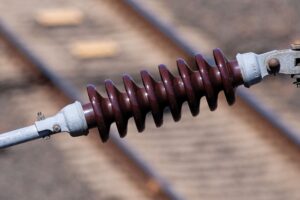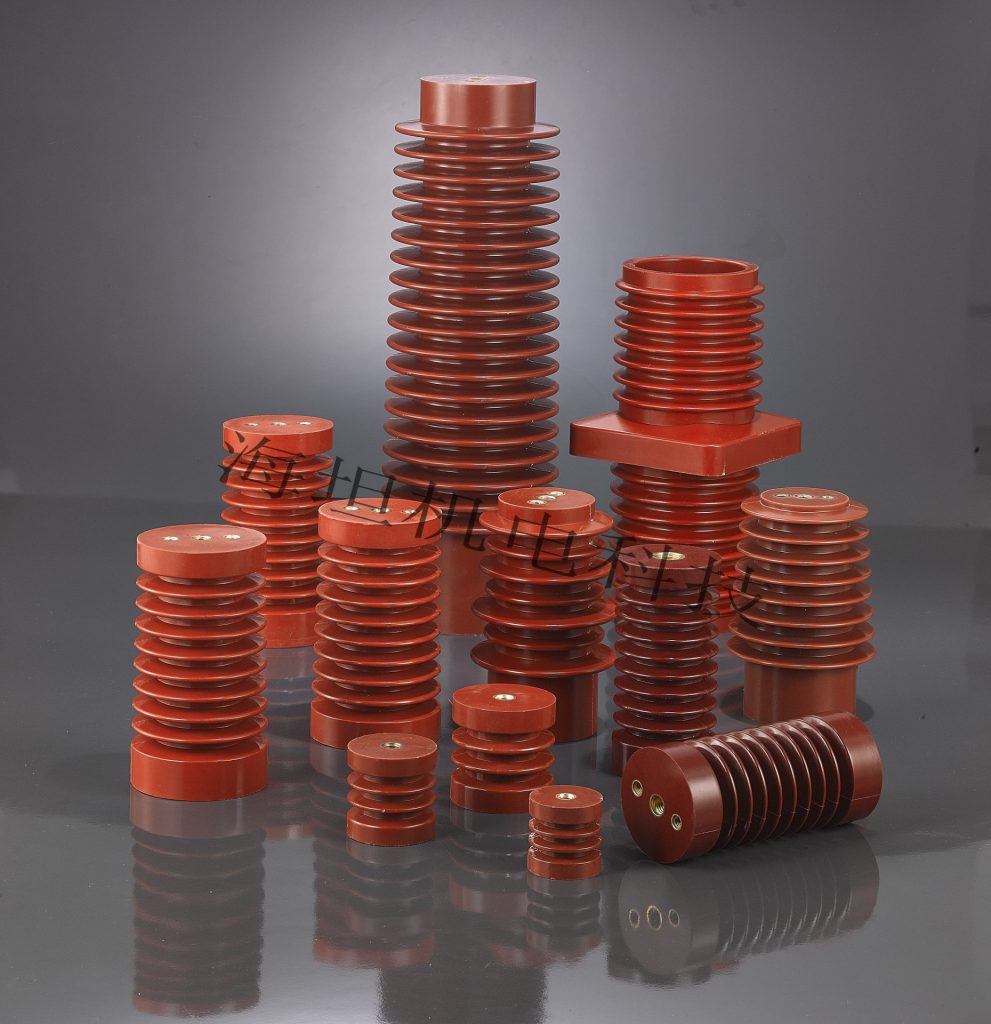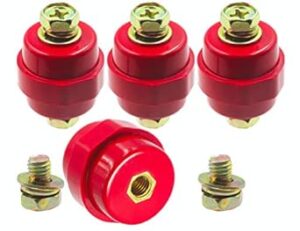Busbar Standoff Insulators: Everything You Need to Know
1. Introduction
Busbar standoff insulators play a critical role in electrical power distribution systems. These essential components provide electrical insulation and mechanical support to busbars, ensuring safety and stability in high-voltage applications. Whether used in power distribution cabinets, renewable energy systems, or industrial switchgear, busbar standoff insulators help prevent electrical short circuits, improve reliability, and ensure compliance with industry standards.
In this guide, we’ll explore what busbar standoff insulators are, their key features, materials, types, applications, and how to choose the right one for your electrical system.
2. What Are Busbar Standoff Insulators?
A busbar standoff insulator is a specially designed high-strength electrical insulation component that supports and standoff busbars in electrical systems. It prevents electrical faults by providing a safe air gap between conductive parts while maintaining the system’s structural integrity. Its features are:
- Electrically standoff copper/aluminum busbars from grounded structures (creepage distance ≥20mm/kV per IEC 60664-1).
- Mechanically supports busbars with compressive strength up to 50MPa (tested per ASTM D695).
- Resists environmental stress including UV radiation, chemical vapors, and -40°C to 150°C thermal cycling.
With their superior electrical insulation properties, busbar standoff insulators ensure that electrical connections remain stable, safe, and efficient, even under high operating voltages.
3. How Do Busbar Standoff Insulators Work?
3.1 Electrical Isolation Mechanism
The insulator creates a high-resistance barrier (>10^12 Ω·cm) between live busbars and enclosures. Key metrics:
| Property | Standard | Typical Value |
| Dielectric Strength | IEC 60243-1 | 30 kV/mm (ceramic) |
| Surface Resistance | ASTM D257 | 1×10^14 Ω |
3.2 Mechanical Load Distribution
Finite Element Analysis (FEA) shows optimized stress distribution:
- Axial load capacity: 2,500 N (EPRI testing data^^)
- Vibration resistance: 5-2000 Hz @ 5g (per MIL-STD-810G)
4. What Are Busbar Standoff Insulators Made From?
Busbar standoff insulators are typically manufactured from high-performance electrical insulation materials that offer superior durability, heat resistance, and fire retardancy. The most common materials include:
Epoxy Resin – High mechanical strength, chemical resistance, and flame retardant properties.
DMC/BMC (Dough Molding Compound / Bulk Molding Compound) – Used for high-strength electrical insulation in power distribution panels.
Phenolic Resin – Heat-resistant material with excellent dielectric properties.
Ceramic/Porcelain – Used in high-voltage applications due to its exceptional insulation performance.
Each material provides unique thermal, electrical, and mechanical advantages, making it essential to select the right material based on your application.
5. Key Features Explained
5.1 Electrical Insulation Strength
Test protocol: 1-minute voltage withstand test at 2.5 times the rated voltage, in accordance with ANSI/IEEE C29.1-202X (if applicable)
Case study: Replacing PVC insulators with silicone in a Texas data center reduced leakage current by 89%
5.2 Mechanical Durability
Shear strength: 18 MPa (glass-reinforced epoxy) vs. 6 MPa (untreated polymer)
Impact test: 5J/mm² (passed IK08 rating)
5.3 Heat Resistance
Thermal class ratings:
- Class B (130°C): Standard BMC
- Class F (155°C): Silicone-coated
- Class H (180°C): Ceramic-filled composites
5.4 Fire Retardancy
UL 94 ratings hierarchy: HB < V-2 < V-1 < V-0 (self-extinguishing in 10s)
Halogen-free options: Phosphorus-based additives (IEC 60754-1 compliant)
6. Types of Busbar Standoff Insulators
There are various types of busbar standoff insulators, each designed for specific applications:
Epoxy Insulators – Offer excellent heat and electrical insulation, commonly used in medium and high-voltage switchgear.
DMC/BMC Insulators – High-strength and cost-effective solutions for low and medium-voltage applications.
Porcelain/Ceramic Insulators – Preferred for outdoor high-voltage applications due to superior weather resistance.
High-Temperature Resistant Insulators – Designed for extreme heat conditions, suitable for power plants and heavy industries.

7. Applications of Busbar Standoff Insulators
Busbar standoff insulators are widely used in various power distribution and industrial sectors, including:
Electrical Panels & Switchgear – Supports busbars and prevents electrical arcing.
Renewable Energy Systems – Used in solar inverters and wind turbines for stable electrical connections.
Automotive Power Systems – Applied in EV charging stations to insulate high-power busbars.
Industrial Machinery – Provides safety and efficient power distribution in heavy equipment.
8. How to Choose the Right Busbar Standoff Insulator?
When selecting the best busbar standoff insulator, consider these key factors to ensure safety and performance:
1. Voltage Rating
Make sure the insulator’s voltage rating is equal to or higher than the busbar system’s rated voltage. This ensures reliable insulation and prevents electrical breakdowns. Choose the right voltage for your application, whether it’s for low, medium, or high-voltage systems.
2. Material Composition
The material of the insulator plays a significant role in its performance. Choose from epoxy, DMC/BMC, or ceramic based on the operating environment:
- Epoxy is ideal for indoor low-voltage systems, offering good corrosion resistance and electrical properties.
- DMC/BMC is strong and suitable for various industrial applications.
- Ceramic insulators are perfect for high-voltage outdoor systems, offering excellent resistance to UV and weathering.
3. Heat Resistance
Select an insulator with high thermal stability for demanding environments. Ceramic insulators can withstand temperatures up to 1500°C, making them ideal for high-temperature applications. Epoxy and DMC/BMC insulators perform well in a wide range of temperatures.
4. Certifications & Compliance
Ensure the insulator meets international standards such as ISO9001, CE, and RoHS. These certifications guarantee that the product is of high quality and complies with safety regulations, reducing the risk of failures.
Haitan Electromechanical Technology Co., Ltd. specializes in manufacturing high-quality busbar standoff insulators that meet international standards, ensuring reliable electrical insulation and long-term durability.
9. Conclusion
Busbar standoff insulators are essential for safe and efficient electrical power distribution. Whether you need insulation for switchgear, renewable energy, or industrial applications, choosing the right insulator ensures system reliability, safety, and compliance with international standards.
For more authoritative guidelines on busbar standoff insulators and Standard for Composite Insulators, refer to the official NEMA Standard:
NEMA Standard for Composite Insulators – Station Post Type.
By following these standards and best practices, businesses and engineers can ensure safety, reliability, and efficiency in their electrical systems.
--- END ---
© Copyright 2024 China Haitan Electromechanical Technology Co., Ltd. All rights reserved.SUPPORT BY:JUNJ Privacy Policy


 E-mail:
E-mail:  No. 20 Lingyun Road, Dongfeng
No. 20 Lingyun Road, Dongfeng 
